Custom Shop: Wyn Guitars
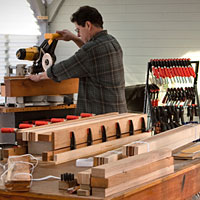 Wyn Guitars is a one-man custom bass shop run by Randy Fullmer, a man with a healthy obsession for exotic woods. An artist at heart, Fullmer got his his start as a luthier at an early age before becoming an animator and producer for Disney. He eventually returned to building instruments, switching to exclusively making basses.
Wyn Guitars is a one-man custom bass shop run by Randy Fullmer, a man with a healthy obsession for exotic woods. An artist at heart, Fullmer got his his start as a luthier at an early age before becoming an animator and producer for Disney. He eventually returned to building instruments, switching to exclusively making basses.
Fullmer just finished moving into a new shop when we got a hold of him to get his perspective on bass building.
How did you get your start building basses?
I started building guitars when I was 12 years old because my parents wouldn’t let me buy a 12 string. They told me I had a guitar. Yes, I explained, I have a 6-string but I also want a 12-string. “No go” said my parents, so I threw them the ultimate curve ball and asked if I could buy the wood and build my own. They were dumbstruck at this request and just couldn’t say no. Somehow I figured out how to build it with a bit of help from a cool fiddle and guitar maker named Tom who my guitar teacher introduced me to, and the rest is history. It was the best magic trick ever, and I built another 30 guitars by the time I was 18.
I then went to art school and had a nice career at the Walt Disney Company as an animator and producer, but one day I realized I had done that long enough and that I wanted to go back to guitar building. I’m leaving out a lot of history in the name of not taking up too much space, but when I made my luthier re-entry, I decided on basses for some pretty clear reasons. I like bass players – they are by and large very nice guys. They are interested in an individual instrument, not just an old Les Paul or an old Strat, and for me, the tone woods have a much larger impact on the sound of a bass than on a guitar. The fantastic hardwoods that I use and their tone properties are my biggest interest and focus. So about five years ago, I launched Wyn Guitars and began exclusively building basses.
So you were originally a guitarist. What drew you to the bass?
I have always liked bass. When teamed with a great drummer, it always felt like the engine. I remember hearing my first band that had a truly great bass player. I couldn’t figure out where that cool sound was coming from. It was so integrated with the kick drum that I went back and forth trying to figure out what was what. From that point on, I realized that all the great bands that I really wanted to hear had a great bass player. It’s the foundation that everything else is built on.
What is the concept behind your designs?
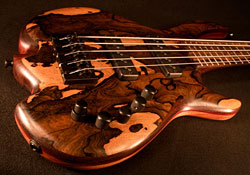 Boy, that’s a million dollar question. I don’t know that I have one brilliant answer for this one. I wish I did.
Boy, that’s a million dollar question. I don’t know that I have one brilliant answer for this one. I wish I did.
I have a bit of a Zen approach to building basses. I once spent three days dissecting all the discrete steps for me to build a bass. I came up with 360 steps. So to me, you have 360 chances to mess up! You also have 360 chances to do things right, concentrating on each one until it’s great. Then you move on to the next.
I can talk about visual design and unexpected wood patterning and breaking the traditional silhouette for hours. So visually, although there are many ergonomic reasons for the basic Leo Fender shape, it is great to bring a fresh look to a bass by breaking rules. Like not book matching a top just because everyone else does. Ultimately, the quality of the whole is determined by every individual component. I build these bass guitars completely by myself for that reason. I want to know every single step and how it was accomplished and never settle for any step having been just okay. The design, the shaping, the electronics, the hardware, the multiple wood choices, and the laminating process are all component parts of the whole. I guess after answering all of this, what I should have said in the first place is that my design philosophy is really that making a great bass comes about when you get every step in the process right.
On your website, you have a decent glossary of exotic woods. What is your favorite wood to use and why?
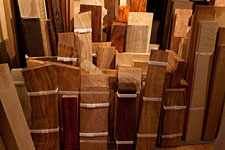
These are tough questions. That’s like asking a mother which one of her kids is her favorite and why? Okay, the answer is Wenge! To heck with all those other woods!
No, it’s Ziricote, that’s my favorite!
The truth of the matter is, to build a great bass – the way I go about it anyway – is like a stew with great ingredients, including great spices. Everything is in balance. I love Wenge because there is a hugeness, a clarity, an attitude and a bark that I have never gotten from any other wood. But I usually tame it with African Mahogany or a warm fret board, or Eastern Rock Maple in the neck to balance the lows with more brightness.
To me, a successful bass is one that is really versatile. It’s loaded with useable tone. It slaps and pops in a nasty biting way and then can sound pristine bell clear in the upper highs and play a melodic ballad. If the electronics are right and the wood is combined in the right proportion, you should be able to get a great range. Every wood that I use has a tonal property that’s unique to that wood, and we haven’t even gone into the visual aspect. If there is a medical condition known as wood-a-holic, I am very much in need of the treatment. It is unbelievably hard for me to pass up a beautiful piece of wood.
How do you think your work with Disney and illustration in general affects the way you build instruments?
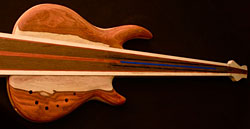
There are very clear design principles that work in all creative mediums. As an example, in art you often contrast big shapes with little shapes to make something visually interesting. In music you have soft and loud passages, uptempo and slow, familiar chord progressions and then the unexpected chord. In guitar building, from a visual standpoint, I constantly use these principals because that’s how nature works and we’re all aware of it whether we consciously know it or not. At the same time, I want each individual instrument to look like no other – the unexpected chord.
And then of course, I cheat, because using the beautiful hardwoods that I do just gives me such an amazing palette of colors and patterns that I could never come up with myself. Nature is rather intimidating that way. So the aesthetic choices I make are all driven by the same design elements that I would include in a painting or an illustration or a song.
Tell us about your process in creating an instrument for someone.
The process usually starts with a number of emails and phone conversations. I listen. I ask a lot of questions and I listen some more. At the same time, I explain that some players know a great deal about woods and electronics and the scale length and the fret size they’re looking for, etc. Others just know the sound that they’re after.
I let it be known that I have a lot of experience and ideas and I’m happy to jump in and make suggestions wherever it will help. It’s a collaboration. I want the player to get a bass that he is completely thrilled with. I only push back if I feel that the tone that some one is describing is really in conflict with the woods that they’re asking for, something like that. I enjoy collaboration with the hope that we’ll both learn and grow and come up with potentially better decisions than either one of us would have come to on our own in terms of building the best bass for a given player.
When we get to the point that we’ve pretty clearly hammered out the specifics of the bass, I’ll price it out and see if that’s something the player can live with. I’ll also discuss my schedule in that being a one-man shop, the obvious downside is that there’s usually a considerable wait. I take a small deposit to hold a players place in line, a second deposit when I’m ready to start their bass, and the final payment upon completion. I do the best I can during the building process to send photos and to update the customer about the progress of their bass.
What is your opinion of bolt-on versus neck-thru construction?
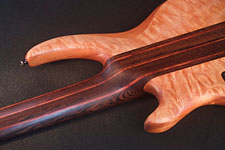
I only build neck-thru. I fully admit that there are great bolt on basses, so I’m not trying to make the case that neck-thru is always better. But for me, it is a cleaner, better design that I feel I fully understand. I see the neck thru as one uninterrupted beam. On that beam you mount your tuning pegs, your nut, the fretboard, your pickups and your bridge and your strings. Great continuity, great sustain, no sound energy being dissipated due to a poor neck body joint.
From a design construction standpoint, the only negative there appears to me is that if the neck ever twists or warps, you’re rather sunk. You can’t replace it like you can a bolt on. To that end, I typically make my necks with 7 laminations of the straightest truest woods, I use a single two-way truss rod, and for 6 and 7 string basses, I use two additional carbon fiber rods that are laminated into the neck just under the fretboard. I have not had a problem with one of my necks.
What is your opinion of active versus passive pickups?
The typical 6-knob configuration that I use has a push pull volume control that gives you both passive and active circuitry options. My goal is to give you the same tone in both. But there’s no question to me that when you put the bass in active mode, your volume and tone capabilities will expand. I mostly use Aguilar OBP-3, Nordstrand, and Bartolini Pre-amps. They each have their strong points.
What is your favorite part about building basses?

I honestly like every phase of construction. Each part is very satisfying to me. However, if I do have a favorite part, it’s probably shaping the neck. The neck is visually graceful and absolutely critical to a player really connecting with the bass. A bass has to sound great, it has to look great, but it has to feel great too. The action and response has to feel as comfortable as an old pair of blue jeans. I work a neck over and over and over again, grabbing it and holding it and sliding my hand up and down as I sculpt. It is a complete joy to me to hand shape a neck and the best moment is when I know I have finally arrived at a smooth playable neck.
Is being a one-man shop tougher for you or better for you?
I started at Disney as an animator. I worked my way up to the role of a Producer where I literally had 300 people working under me. I enjoyed it, but as you can imagine, I got to go to a lot of meetings. I longed for the day when I was an artist and could do the work rather than supervise everyone else doing the work. Come on you guys, you know you always want what you can’t have! So now I’m back to being an artist. I don’t mind sawdust in my hair or in my pants pockets. I love the hands-on aspect and the creative zone I get in when I’m at work. I have my moments where I think I’m a bit insane trying to do everything myself, but I’m pretty happy doing it myself too. Sometimes when you’re really happy, you don’t want to mess with that. So at least for the foreseeable future, I’m a one-man shop.
Tell us about your new shop.
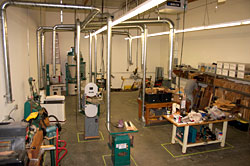
Ever since I was in the 8th grade and had my first wood shop class, I wanted a spacious shop and one with a tall ceiling. I got it! I have never owned a house with a view, but I always felt that I would think differently and more expansively if I had a view. Well I’m finding that having that high ceiling does the same thing for me. It’s a complete joy to go to my shop every day. There are the practical advantages, like you can lean the long boards in bins against the wall rather than constantly stacking and unstacking them. There is also the safety aspect of having enough space to work around all of your tools. I finally have a dust collection system that not only keeps the place very clean, but keeps the air clean and healthy to breath. I can see all of my wood, I can find everything. And my hope and after a month in the shop, my firm belief, is that this new shop will pay some nice dividends in terms of efficiency.
Things are very smooth in this shop. I made a detailed floor plan of this 1,500 square foot shop, placing every tool and work bench in it’s most logical place for a good work flow. I rearranged it many times. I had to make solid choices because I then took this plan to my electrician and had the shop wired 110 and 220 with a power drop specific to each tool. No extension cords to trip on!
Then my stepbrother and I assembled the dust collection system obviously specific to each tool. I’m telling you, I am one lucky happy guy to have finally gotten this wood shop. It’s man cave!
How many basses have you built to date?
I have built approximately 100 basses in the last five years. Last year I built 30 basses, which for me is really cooking.
How do the more recent ones compare with the first?
I honestly feel that my basses, even at the very first, were very good. They are better now, but in very subtle ways. I literally learn something new on every bass I build. I’m always looking for better faster smarter ways to do things that keep the same quality or make it even better. I have no interest in cutting corners, ever.
Also, the variety of what I’m building keeps expanding. For this year’s NAMM show, I built my first 7 string bass with an Amboyna Burl top. What a sweet wood that is (heck with Wenge and Ziricote, Amboyna Burl is now my favorite!) I just finished a lefty fretless bass with Piezo and magnetic pickups. Another one this week is an E-to-E 6-string bass like the one I built for Abraham Laboriel. Really it can be viewed as a regular guitar an octave lower or it’s the highest 6 strings of a typical 7 string. Another bass just finished is a 6 string tuned F#, B, E, A, D, G. That low F# is serious business, I tell ya!
What’s the craziest thing you’ve been asked to incorporate in one of your basses?

Okay, the craziest thing wasn’t so crazy as it was when it was requested. I built a custom Cocobolo 6-string bass for Jimmy Haslip. I really worked on that bass, selected the best most interesting Cocobolo wood I had. I spared no detail on that one. One of the fun aspects of the bass was that Jimmy had found the shape of a rose in the grain of the Cocobolo and requested that I design the knobs to work around this rose shape. He explained to me that his daughter’s name was Gabriela Rose and that that rose shape really meant a lot to him. “Great, no problem Mr. Haslip”.
So then he toured around the planet for a while, which he does a lot, and the next time he came into town, I had the guitar well on its way, just a few things to do. He said that he now had a great idea that would really finish it off: “Let’s engrave my daughter’s name Gabriela Rose right into the top of the guitar.”
“Okay, that’s a great idea Mr. Haslip”… I’m thinking “Holy *!##, the guitar is 98% done and now we’re going to laser cut his daughter’s name right smack in the middle of the front of the guitar.” Oh yes, in a nice arc over the rose.
I took the guitar to my laser cutter friend, Haryn. She had to take the front off of her laser-cutting machine to fit the completed guitar in it. We did test after test after test to get it right. We stalled as long as was humanly possible. She pushed the button and we watched. It came out great. I was really sweating profusely. Oh my!!
What would you tell someone thinking of building his or her own bass?
Run, run like the wind!
No, not really.
I would say that the first one is a bit of a terror ride because there is really so much to it. But unlike building a table or a chair, when you finish it, there is that magic waiting for you. If you are brand new to the craft, I tell people that a good thing to consider on your first one is to start by buying a pre-made neck, body, and pre-wired electronics. Yes, it’s just assembly, but there is a lot to assembly and having it come out right. You are fairly assured that you will have a playable bass for your investment, you will learn whether this if for you or not, and you will get a lot of things clear in your mind about what it takes. If you pass that test and you’ve got the bug, there are great books, DVDs and some great stuff on Youtube that can tell you a lot about making a bass from scratch.
If you get through your second one and still have the bug, then it just may be for you. It is an infectious bug when you realize what a magic trick it really is. It’s like you just built Pinocchio and he can talk!
And the pride you will feel that you had the patience and the determination to get through it and make a working playing musical instrument is extremely satisfying. The biggest qualities you need aren’t unbelievable talent, they’re patience, an ability to problem solve, determination (and a place where you can make noise and sawdust without the neighbors coming unglued).
Best of luck to you. I can see that glint in your eye! I think you should take the plunge!

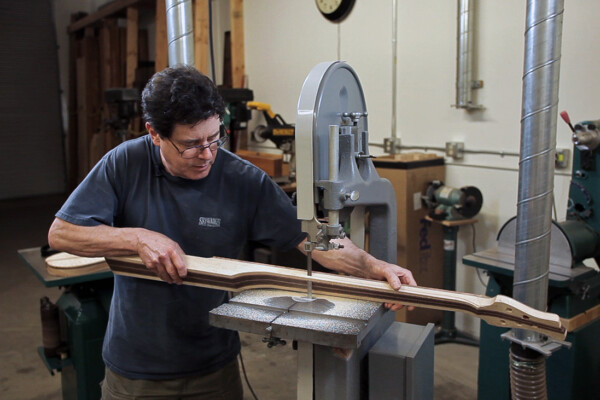
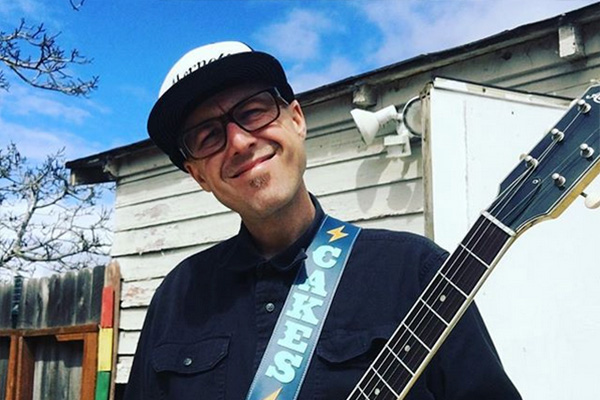
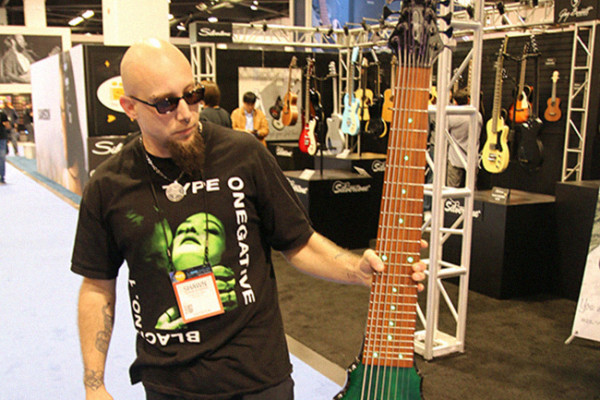
I love the feel and look of a good piece of wood, covering it with paint or stain I feel kills the tone and quality of the wood.
[…] Artist, Craftsman, Music Junkie….. Check out this great writeup on Randy at NoTrebel.com […]
After watching the WYN guitar promo, I feel like there is no bass guitar with good sound like that from your quarters. I’ve fallen in love with WYN guitar. Please I’m in Ghana, how can I get one. Abraham Laboriel is my mentor.
I will be happy to connect to good friend making guitar.
Sir metal guitar James Trussart & Sir randy Fullmer wood bass guitar…From JCP*.
Beautiful designs and tone
[…] a 2011 feature interview, Fullmer told us about his career and concepts. When we asked about how his animation career affected his bass designs, he made some great […]
[…] a 2011 feature interview, Fullmer told us about his career and concepts. When we asked about how his animation career affected his bass designs, he made some great […]